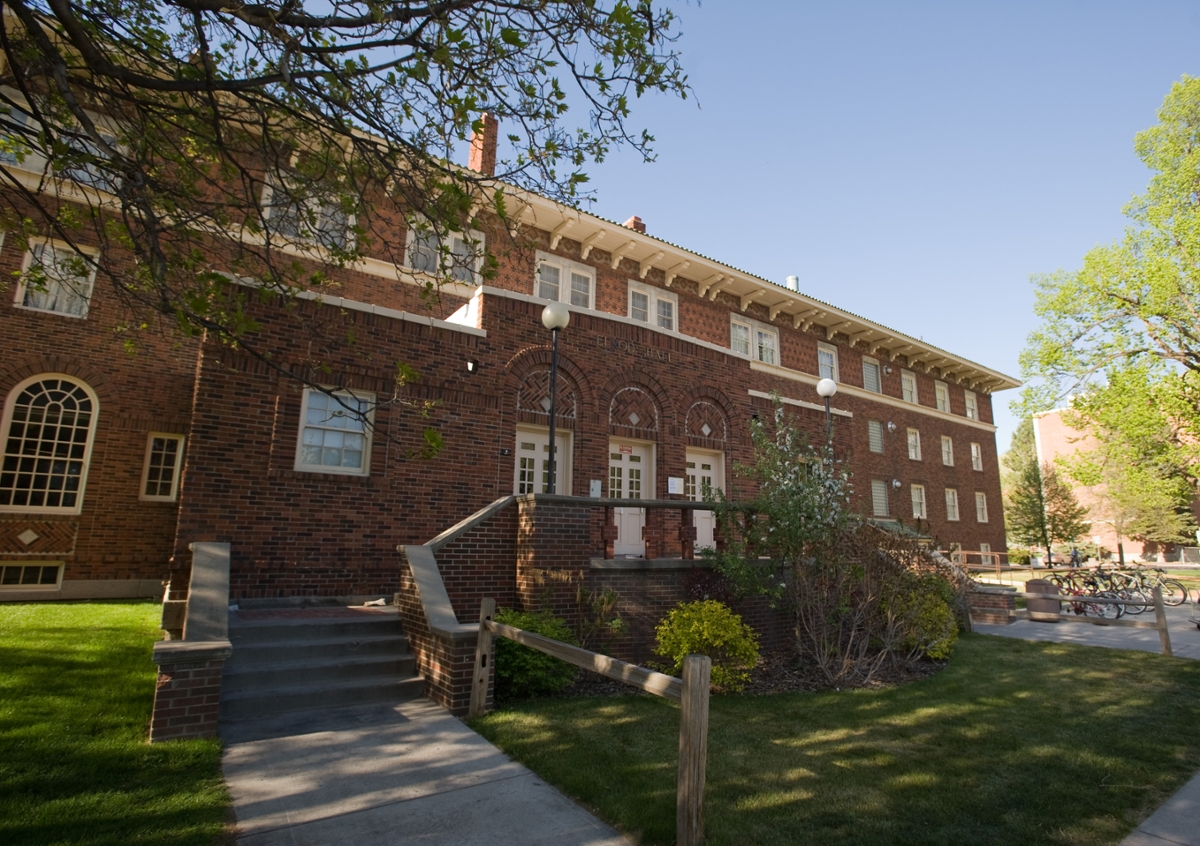Montana Biologist's Musings About College Echo Modern Critiques
 Elrod Hall at UM: The Elrod residence hall at the University of Montana is named for esteemed biology Professor Morton J. Elrod.
Elrod Hall at UM: The Elrod residence hall at the University of Montana is named for esteemed biology Professor Morton J. Elrod.
In 1916-18, Morton J. Elrod, professor of biology at the State University of Montana in Missoula and a prominent Montana naturalist, sounded themes remarkably similar to those of modern critics in his musings about “The American University.”
In an overview about the emergence of American universities, he stressed the mingling of public and private resources to achieve larger societal goals, not all of which he approved. He specifically repudiated “extension” – delivering lectures and coursework in the communities surrounding campuses – activities strongly supported by former UM Presidents Clyde A. Duniway (1908-12) and Edwin B. Craighead (1912-15). As Elrod warned, “The dangers ... [resulting] from this method of teaching are superficiality, cheapening and a tendency to educational sincerity.” He thought the danger compounded by the challenge of finding “a sufficient number” of qualified itinerant lecturers and teachers, with the result of settling for almost anyone available, qualified or not.
Elrod attributed this national obsession with extension to the misguided campaign to provide higher education to everyone seeking it regardless of preparation, readiness or motivation. By his estimate, one person enrolled in college for every 400 citizens in the United States – for every 300 by including the normal schools – was the highest rate in the world and probably too high for effective educational management.
He had discovered that a “study of the chain of American universities, extending from Harvard westward to California, is far from reassuring, and shows a tendency that is distressing, if not alarming.” In his view, “The rapidly increasing number of students at the different institutions, coming upon the teaching force so rapidly ... in the last decade, has thrown upon them a burden that has not been properly met.” As a direct result, “The proportion of full professors in each staff has been ... continuously and rapidly decreasing ... the proportion of associate and assistant professors has remained about constant, and the proportion of instructors or assistants has alarmingly increased, and the conditions are changing in this direction yearly.”
He warned gloomily that these developments, if unchecked, portended disastrous consequences for American higher education.
In an analysis familiar to modern critics – including disdain for the “unfaculty,” the just-in-time teaching appointees familiar in later years – Elrod assigned the causes for these and other damaging changes to the phenomenally increased numbers of students, making “the work of caring for them much greater”; the stagnation of institutional resources that failed to keep “pace with the increase in students”; and the inexorable competition among institutional leaders for ever more students, wasting resources with extravagant expenditures for grounds and student buildings and too little for instruction and research.
Once again, his critique rang themes that resonate loudly in more recent times. Inevitably, as he complained, “inexperienced” instructors and assistants provided most of the teaching and “fewer” students ever actually worked “with men who have achieved eminence in their profession.”
About half of the staff had temporary appointments at low salaries, thus driving down the average for all. “The ranks are slowly being filled by those who may be considered the less shining lights, the professions and trades offering greater inducements than teaching.” Other so- called innovations, such as “summer session,” engendered “superficiality of work,” commercialization and diversion of faculty members from thoughtful research to “purely utilitarian” and “elementary phases of study.” Engaging in summer work to avoid poverty exacerbated the need for rest and interfered with serious study.
Elrod traced many of the problems to the replacement of the college “entrance examination ... by the certificate of graduation” from high school. Traditionally, universities had dictated the required high school curriculum and the high schools delivered it, as he knew from personal experience had indeed prevailed during the tenure of founding President Oscar J. Craig (1895- 1908). To make certain and to maintain standards, the universities had required the applicants for admission to pass entrance examinations that assured adequate preparation. The “certificate method” in response to public demand allowed the high schools to control not only the high school curriculum but the college admission process as well, since the high schools designed and delivered the courses and certified the student outcomes.
Elrod thought that standardized admission examinations administered by an external agency – such as the SAT or ACT then in development – offered the only solution, one he strongly urged at the earliest possible date. To illustrate what had happened, he noted that “About nine or 10 years ago, the University of Montana, by vote of the faculty, accepted as part of the entrance requirement any subject which the high schools of the state were willing to recognize in their course of study.” That decision virtually abolished all academic standards. As many traditionalists of his time and later, Elrod also deplored the proliferation of electives in the college curriculum, another of former President Duniway’s reforms, resulting inevitably and inexorably in the “differentiation of the courses of study into groups, the adoption of major lines of work and the rise of the professional school.”
As he said, “Educational institutions seem to have gone mad on the utilitarian side, due largely to the development of the professional school.” Rather than a broad and prescribed course of study, the students chose “what to study,” invariably following the “line of least resistance,” taking their leave at graduation with little more insight and understanding than when they first arrived on campus. Elrod apparently found little of value in the curricular changes that occurred in Montana after the Craig years of the early 20th century.
Note: The author researched many journals and other materials in UM’s Mansfield Library to pen this article.
George Dennison | UM President, 1990-2010
